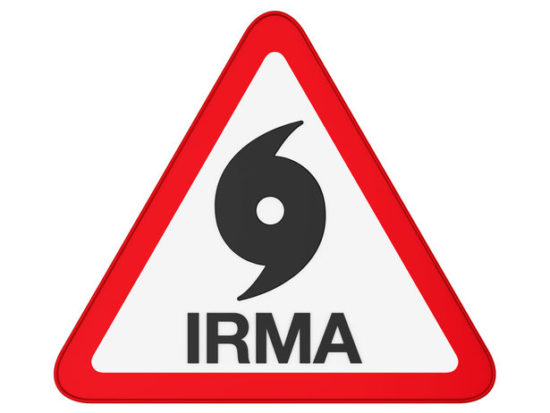While the recovery efforts are still unfolding, scientists and environmental experts believe the environmental toll from Hurricane Irma in Florida may not be as harsh as the problems caused by Hurricane Harvey in Texas. The two storms have resulted in hazards that are very different, leading to varied responses to the destruction left by both storms.
Wind damage is the primary concern after Hurricane Irma, rather than the widespread flooding seen after Hurricane Harvey. In addition, the areas of Florida that are experiencing flooding likely won’t have to grapple with the level of contamination that Texans faced, according to Charles Haas, a professor of environmental engineering at Drexel University in Philadelphia. Haas explained that Florida doesn’t have the same concentration of industrial sites that the Houston area has, which results in fewer opportunities for harmful chemicals to seep into flood waters.
While runoff from chemical plants and oil refineries posed the biggest problems along the Texas Gulf Coast, sewage and other wastewater were the most immediate problem in Florida, raising the risk of disease, triggering algae blooms that can suffocate fish and other marine creatures, and complicating cleanup.
Because of its flat terrain, Florida relies heavily on wastewater lift stations with pumps to move sewage. Those pumps require electricity. In 2012, the state required that pumping stations be able to withstand 25-year floods, or in some cases 10-year floods. But after Hurricane Irma, electricity has been in short supply, including the supply for the sewage pump stations. Those power outages and other factors have led to scores of leaks of wastewater and raw sewage into streets, lakes, rivers and neighborhoods, described in pollution filings compiled by the Florida Department of Environmental Protection.
As frequently occurs when sewage and waste water are not properly disposed of, drinking water contamination became a concern in Florida. Forty-eight communities in Florida have been placed on mandatory boil water notices because of ruptured pipes or damaged sewer lines caused by Hurricane Irma. All of the Florida Keys face unsafe drinking water and several entire cities, including West Palm Beach, Venice, Pahokee and Canal Point face boil water notices. In Venice, Florida, the city’s utilities department shut off its water supply due to damage to a water main. Vast sections of Broward County were without power and under a boil order, leading to public distribution of bottled water at numerous locations. Residents in the Florida Keys have been told to expect camping-like conditions that include no potable water and in some areas a lack of power. Local officials have warned residents of the Keys that the conditions may last for “weeks.”
Hurricane Irma’s path also crossed dozens of hazardous waste sites, including several Superfund sites in Florida and Puerto Rico. In Puerto Rico, Hurricane Irma passed over a Superfund site containing depleted uranium and other heavy metals from U.S. Navy munitions. Testing is taking place to determine whether Irma caused contamination from these Superfund sites to nearby areas. (Notably, another major hurricane, Hurricane Maria, just this week, devastated the entire island of Puerto Rico following on the heels of Irma. Immediate efforts are now focused on the search and rescue of people. The toll on the island’s environment, however, will be dealt with in the months to come as Puerto Rico has 23 Superfund sites and has large uncovered coal ash piles that are susceptible to cross-contamination to adjacent sites from wind and flooding.)
After Irma passed, Federal and state environmental regulatory bodies teamed up to expedite recovery. A statement from Florida Governor Rick Scott’s office said the state’s Department of Environmental Protection was forming a team with the United States Environmental Protection Agency (“EPA”) to begin assessing and responding to any potential environmental hazards. At the same time, the state and EPA issued waivers from environmental regulations in response to the storm to help Florida restock its supplies of motor fuel and maintain electric power.
The EPA also announced on September 11 that it was granting waivers from air pollution emissions limits and related requirements for all electricity generators in Florida through September 26, to ensure that the facilities could provide enough power after the storm.
As residents of the affected areas continue their recovery efforts, the ultimate costs and extent of the environmental damages continue to mount.

